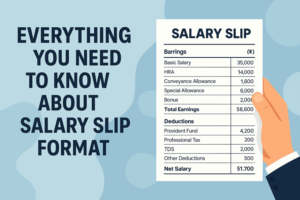
Introduction to Global Stock Investing
Investing isn’t limited to Indian markets anymore. With a few steps, you can own a slice of the world’s biggest tech companies, Facebook (Meta), Google (Alphabet), Amazon, Apple, and Microsoft. These firms run the apps, devices, and platforms you already use every day. For Indian investors, global stock investing means two things: spreading risk outside the domestic market and riding on global innovation.
Why Indian Investors Are Eyeing US Tech Stocks
US tech stocks hog headlines because they dominate markets. Apple sits on a trillion-dollar valuation, Amazon drives global e-commerce, and Microsoft powers businesses worldwide with its software and cloud services. Meta owns the largest social media platform, while Google rules search and online ads. Indian investors see them as safer bets compared to smaller, volatile local companies. By investing in those stocks, you link your money with firms that shape global consumer behavior.
Overview of FAANG + M Stocks
You may have heard the term FAANG: Facebook, Apple, Amazon, Netflix, and Google. Add Microsoft, and you get FAAMG, the updated basket many investors focus on. These five consistently stay at the top of global stock charts. They deliver products that people use daily, from iPhones to Gmail to Windows. Owning their shares means owning part of that growth story.
Legal Framework for Indians Investing Abroad
Before you jump in, it’s essential to know the amount you are allowed to invest, as per Indian regulations. RBI has clear rules on how Indians can invest abroad.
RBI’s Liberalised Remittance Scheme (LRS)
The RBI launched the LRS scheme to let Indian residents send money abroad for investments, pursue foreign education, or undergo medical treatment overseas. You can also use it to buy shares in foreign companies through approved platforms.
Annual Investment Limits and Compliance
Each individual can invest up to USD 250,000 per financial year under LRS. A family of four can legally send up to USD 1 million if each member uses the full limit. Before sending money, you fill out a simple form (Form A2) through your bank, declaring the purpose as “foreign investment.”
Tax Implications for Overseas Investments
When you buy US stocks, your profits get taxed in India. Hold them for less than 24 months, and gains are treated as short-term income taxed at your slab rate. Hold them longer, and they fall under long-term capital gains with a 20% tax + surcharge, and cess. Dividends also attract tax in the US at 25%, but thanks to the India-US tax treaty, you can adjust that while filing returns here.
Ways to Invest in US Tech Stocks from India
There are multiple ways to buy these stocks. Some are direct, others indirect. Pick what suits your comfort and budget.
Using International Investment Platforms (INDmoney, Vested, Groww)
Apps like INDmoney, Vested, and Groww connect you directly to the US markets. You open a US brokerage account through them, transfer funds, and start buying shares. Many allow fractional investing, which means you don’t need thousands of dollars to buy one full Amazon share; you can buy a small slice instead.
Through Indian Brokers with Global Tie-Ups (ICICI Direct, HDFC Securities)
If you already have an account with a broker like ICICI Direct or HDFC Securities, you can use their global tie-ups. They link with US brokers, so you get access to international markets without leaving the Indian ecosystem.
Investing via Mutual Funds or ETFs with Global Exposure
Don’t want the paperwork? Mutual funds and ETFs in India already offer international exposure. For example, Motilal Oswal NASDAQ 100 ETF invests in top US tech stocks. You buy the Indian fund, but your money rides on global performance.
Buying Fractional Shares in US Markets
Some platforms let you buy fractional shares. If one Apple share trades at $180, you can invest $18 and own 0.1 share. This helps small investors diversify across multiple companies without needing huge capital.
Step-by-Step Guide to Investing in Facebook (Meta), Google (Alphabet), Amazon, Apple, and Microsoft
Let’s go step by step, so it feels doable and straightforward.
Opening a Foreign Investment Account
Pick a platform, either an app like Vested or your Indian broker with a global arm. Complete KYC with PAN, Aadhaar, and sometimes a passport. Once verified, your foreign account gets activated.
Funding Your Account via LRS
Next, transfer funds through your bank under LRS. Fill the form, declare the purpose, and send money in USD. Banks usually charge a small fee and apply a forex markup.
Placing Buy Orders for US Tech Stocks
Once your account shows the balance, log in, search for tickers like AAPL (Apple), MSFT (Microsoft), AMZN (Amazon), META (Meta), and GOOGL (Alphabet). Enter how many shares (or fractions) you want and place the order. It’s like buying Indian stocks, just in USD.
Tracking and Managing Your Portfolio
After you buy, track your holdings on the platform. Most apps show live prices in both USD and INR. You’ll also see dividends when credited. Keep an eye on earnings results and news because global stocks react fast.
Fees, Currency Conversion & Other Charges
Investing abroad comes with extra costs.
Brokerage Fees and Platform Charges
Some apps charge $1–$5 per trade. Others offer commission-free trades but may recover costs elsewhere. Always read the fee schedule.
Forex Charges and Tax Deducted at Source (TDS)
When you convert INR to USD, banks add a forex markup, usually 0.5%–2%. On top of that, the government collects TCS at the rate of 20% on remittances above ₹10 lakh a year. You can claim TCS refunds when you file your income tax returns.
Annual Maintenance and Transfer Charges
A few brokers add annual maintenance fees for holding a US account. Banks also take a transfer fee each time you send money abroad.
Risks and Considerations
Global stock investing is exciting, but it’s not risk-free.
Currency Fluctuation Risks
Your returns depend on both stock prices and the USD-INR exchange rate.
Regulatory and Taxation Differences
You must follow both Indian and US rules. RBI regulates money leaving India, while US tax rules govern dividends. Reporting requirements also apply while filing returns.
Volatility in the Global Tech Sector
Tech stocks are powerful but volatile. Regulatory fines, antitrust cases, or interest rate hikes can shake them. Be ready for swings and avoid putting all your money in one stock.
Conclusion
Global stock investing allows you to own a piece of the companies you dream of. With RBI’s LRS, platforms, and mutual fund options, investing is easier than ever.
The key is planning. Choose the right route, understand the fees, and know the risks. Start small with fractional shares or ETFs. Track your portfolio regularly. Over time, owning shares in Meta, Google, Amazon, Apple, and Microsoft can help you build a global portfolio that grows alongside the world’s most valuable companies.
FAQs:
Is it legal to invest in US stocks from India?
Yes, it’s 100% legal. RBI allows Indian residents to invest abroad under the Liberalised Remittance Scheme (LRS). All you need is to route the money through authorized banks or investment platforms and declare the purpose as foreign investment.
How much can I invest in foreign stocks from India in a year?
The annual cap is USD 250,000 per person in one financial year. If four members of a family invest together, the combined amount can go up to USD 1 million. This limit covers all overseas investments, including stocks, bonds, or property.
What platforms allow Indians to buy US tech stocks?
You can use investing apps like INDmoney, Vested, and Groww. Many Indian brokers, such as ICICI Direct and HDFC Securities, also offer global tie-ups that give you access to US markets through their systems.
Can I buy a part (fraction) of a Facebook or Amazon share?
Yes, fractional investing is possible. Let’s say Amazon trades at $3,000. You don’t need to invest the full price. With fractional shares, you can invest $300 and own 0.1 shares. This makes high-value stocks accessible for small investors.
What taxes do I need to pay on foreign stock investments?
Dividends from US stocks attract a 25% tax in the US. Thanks to the India–US Double Taxation Avoidance Agreement (DTAA), you can claim this while filing taxes in India. Your capital gains will be taxed in India if you qualify as a Resident Indian. Hold stocks for less than 24 months, and gains are taxed at your slab rate. Hold them longer, and they qualify for long-term capital gains at 20% + surcharge and cess.
Is KYC required for global investment platforms?
Yes. You need to complete KYC before you start. Most platforms ask for PAN, Aadhaar, bank account details, and an ID proof like a passport.
How do I repatriate my gains back to India?
You sell your stocks, the funds move into your linked US brokerage account, and from there, you remit the money back to India through your bank under LRS.







